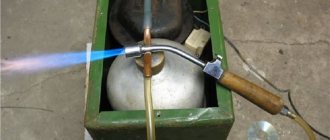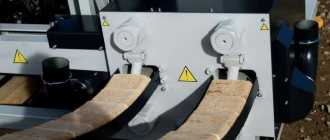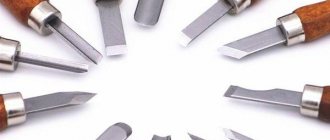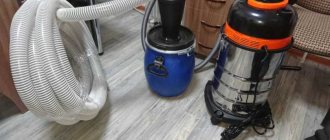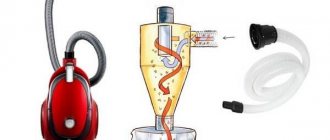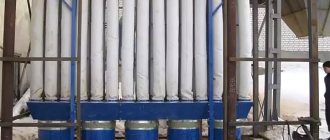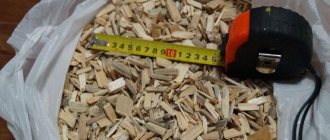One unpleasant feature when working with wood is the presence of a large amount of shavings, sawdust and finer wood dust. Accumulating in the workplace, they create unbearable working conditions. In addition to the fact that they interfere with technological operations, they are dangerous to health. To solve this problem, many complex and expensive machines are equipped with industrial vacuum cleaners. The presence of such an option significantly increases the price of the entire unit. However, this problem can be solved in a budgetary way. To do this, you need to assemble the chip pump yourself. Such a system does not require complex equipment, and can solve the problem of chip collection quite effectively.
How does the chip pump work?
A flexible hose, preferably corrugated, of small diameter, is connected to the mechanism. The smaller the cross-section of the hose, the higher the speed of the sucked air, which means the quality of cleaning will be better. Along with large chips, small particles several microns in size will be removed from the room.
The air in the device is discharged due to the rotation of an impeller connected to an electric motor.
Chip ejector ─ essential auxiliary equipment
But enough about the chips, time to move on to the main subject of conversation - the chip suckers with which they are disposed of. Why is this necessary? Chips that are not evacuated from the cutting zone in time (and a huge amount of them are formed during the woodworking process) worsen the working conditions of the tool and reduce the quality of wood processing. Its debris interferes with the personnel servicing the machines, requires significant time and labor to clean the premises, and provokes an increase in fire hazard. Even a very small workshop cannot do without chip removal in carpentry, furniture and other areas of woodworking production. Therefore, buying a chip ejector (moreover, manufactured by leading domestic or foreign manufacturers who are thoroughly versed in all the design features of this seemingly simple equipment, but in fact fraught with many “pitfalls” of equipment) is a strategically and tactically more correct decision than trying to save money. make a chip extractor with your own hands. A new, reconstructed or existing enterprise must be equipped with chip suction systems. The price of losses caused by their absence will be disproportionately higher than the resulting “savings”. Yes, and is it really acceptable to save on product quality, fire safety and, especially, the health of workers?
To remove chips, and along with it dust and sawdust, it is possible to install centralized aspiration and pneumatic transport systems or to use individual installations that operate autonomously. The smaller the enterprise, the more arguments in favor of autonomous equipment. For machines with a relatively small volume of sucked air, the use of individual (autonomous) chip ejectors is preferable, since when connected to a centralized system, air ducts with a small diameter will create significant hydraulic resistance. Autonomous installations are also used in large factories, along with stationary centralized systems, for example, when commissioning new technological equipment.
The advantages of individual chip ejectors are lower capital investments and operating costs, mobility (they are easy to move from place to place), ease of commissioning, ease of maintenance, and the ability to connect not only to one, but also to several machines. Autonomous chip ejectors are recirculation-type installations that return air purified using filters (and in some models, also cyclones) back to the production room. This allows you to reduce energy consumption for air preparation, ─ first of all, heating it in the cold season.
Selection of material
A hose, preferably with a fabric braid, from an old vacuum cleaner, is suitable for removing air with debris. You will need a plastic sewer pipe D = 50 mm and a length of 150 mm, a plastic corner bend of 45 degrees and a length of 200 mm, a plastic bucket from 10 to 25 liters with a lid, and a second bucket can be purchased in smaller sizes (5 - 10 liters).
You will also need 20 mm thick plywood, screws and sealant.
How to make it yourself
An industrial type vacuum cleaner for removing chips and dust consists of several main parts, namely:
- Air duct.
- Vacuum pump.
- Working nozzle.
- Cyclone filter.
If you set yourself the goal of making a full-fledged chip pump with your own hands, then we suggest considering which units and components can be used ready-made, and which ones you will need to make yourself from scrap materials.
Pump
If you need to make a productive and powerful vacuum cleaner in order to remove metal shavings in a metalworking room, then you will need to find or make your own centrifugal pump.
If you are careful, you can make the snail assembly and centrifugal wheel yourself out of plywood with your own hands, and also use metal corners as an addition. For the pump drive, an electric motor should be used, the power of which will be from 1500 to 2500 W.
Please note that if you are planning work in a carpentry workshop, then it will be easiest to use the simplest household vacuum cleaner as a pump. Given that shavings are much heavier than household dust, you should choose the most powerful vacuum cleaner model available.
Air ducts
If you are designing a high-performance chip extractor for your workshop, you must be very careful in choosing the materials and sizes from which the air connections will be made.
The larger the air outlet size, the less power loss will occur. In a small pipe, not only will the air flow be greatly inhibited, but also, after a while, “plugs” may begin to form from accumulations of small chips, as well as dust residues from the wood.
At the moment, you can find ready-made corrugated hoses on sale for creating air ducts of different diameters. A spiral-type frame, which is made of spring steel, will provide such air ducts with a sufficient level of strength. When assembling air ducts from such a corrugated hose, you should pay attention to how to seal the joints and connections. The slightest cracks can cause the device to begin to suck in air and reduce the efficiency of the entire device as a whole.
It will be quite convenient to use polypropylene sewer pipes, which already have couplings and cuffs, for assembling air ducts. This will ensure ease of disassembly and assembly, while ensuring a tight and reliable connection. If you are constructing a carpentry chip extractor with your own hands according to a drawing based on a home vacuum cleaner, then you can use polypropylene pipes for the air duct, as well as pipes with a diameter of 3.2 and 4 cm. These are the most popular sizes, and a wide range of fittings makes it possible to assemble ingenious designs without any problems. Polypropylene parts are also useful for making a filter.
Cyclone filter
The most complex and quite interesting unit in the design of an industrial chip ejector. Naturally, you can purchase a ready-made cyclone. Cyclone-type air cleaning units are manufactured industrially in a variety of sizes and with varying degrees of productivity. This ensures a high level of cleaning efficiency as well as ease of maintenance.
But it will be much more interesting and also cheaper to assemble the unit yourself. It’s easy to find ready-made drawings online, as well as technologies for assembling a cyclone filter from scrap materials. But the design and dimensions of the cyclone filter will largely depend on what exactly you have available. In order to remove all accumulated waste from time to time, the filter must be equipped with a removable lid or hatch, and it must fit tightly and prevent even the slightest air leak.
The following can be used as a working container:
- Homemade container.
- A large plastic bucket for paint and varnish materials.
- A plastic barrel with a capacity of several tens of liters.
Please note that you can assemble a container for collecting dust and shavings with your own hands, for example, from plywood. When making a container from wood, the joints must be carefully coated with sealant and the individual parts must be firmly connected.
But the most difficult thing will be to provide a hole in the design for waste removal, which must close tightly. You can use the cut-out top of a paint can, for example, because the lid is easy to open but still provides a tight seal to empty the trash. It will be convenient to use a bucket that closes tightly for the filter housing. Putties, paints, and building mixtures are usually sold in such containers. From a bucket with a capacity of about 20 liters you can make a mobile and compact filter for a carpentry chip extractor based on a conventional vacuum cleaner.
The best cyclone-type filters for the workshop are made from a plastic barrel with a tightly screwed lid. Such barrels can have a capacity of 20-150 liters, but it is worth keeping in mind that a square-shaped barrel will not work, only a round one is required. The key part of the cyclone will be a device for suction from the container and supplying a dirty air stream from the nozzle. Air suction is performed vertically along the axis of the filter, and the suction pipe can be attached directly to the center of the lid of the bucket or barrel. Just take into account the fact that ideal results will be obtained if you suck out the air not from under the lid itself, but at a height of ½ to 2/3 of the container size. For this reason, not a short pipe will pass through the lid, but a tube of the required length.
The dirty air flow is supplied from above, but horizontally. And this is where the trick comes in. In order for the air flow to swirl along the wall of the cyclone, the inlet pipe must be directed along the wall.
The easiest way to organize such a flow is to install a corner as an inlet pipe. The air that enters the nozzle will turn the flow 90 degrees and be directed along the wall of the cyclone, but in the corner nozzle the air flow will slow down greatly, and in addition, chips and dust will accumulate in the corner. A high-quality solution would be to install the inlet pipe in the form of a straight tube, which is mounted obliquely as close as possible to the wall of the tank.
It will allow contaminants to get inside the cyclone without hindrance and accelerate perfectly along the wall. This will create a powerful spiral flow. The connections must be rigid, and when the chip ejector is operating, the cyclone body will vibrate noticeably. Be sure to ensure excellent tightness, and to do this, use elastic sealants, which are used for installing plumbing fixtures and windows.
Working attachment
How to make a chip ejector for a metal-cutting machine? It is possible to assemble a rigid air duct structure, which is fixed to the machine frame. If the device is used for a carpentry workshop, then the hose of the working nozzle must be flexible and long, and ordinary hoses from a household vacuum cleaner are ideal for this.
It is especially convenient that the hoses from the vacuum cleaner fit perfectly together, and also the “crevice” nozzle for the hose that comes with a household vacuum cleaner is perfect for sucking out chips and dust. Without a nozzle, a household hose is usually tightly connected to the nozzle of a hand-held electric jigsaw or belt sander.
Cyclone assembly
The design of the chip ejector must include the use of a cyclone filter.
Cyclone assembly:
- Installation of a ring for fixation;
- Side pipe fastening;
- Assembling a figured insert;
- Making a cyclone.
Making a ring and insert
- Cut off the side of a small plastic bucket.
- Having placed the container on the plywood, you need to circle its bottom and determine the center of the resulting circle. To find the center, it is enough to draw 2 perpendiculars to the drawn tangents.
- Another circle is drawn 30 mm larger than the first.
- Using a jigsaw, cut out a ring along the drawn circles.
Ring retainer installation steps
The ring is attached to the cut out side of the plastic container.
- Screw the side using self-tapping screws.
- To prevent the plywood from bursting from the screws, you need to drill holes at the fastening points of a smaller diameter than the thickness of the screws.
- On the lid of a large container, a circle is marked equal to the diameter of the bottom of the container itself.
- Cut out the resulting circle, securing it to the side of a small container with screws.
Basic parameters of the chip ejector influencing its choice
When choosing a chip ejector, the following parameters are primarily taken into account:
- Productivity or amount of air flow per unit time (m3/min; m3/h). It must be sufficient for the normal operation of the equipment connected to the chip ejector.
- Suction (inlet) vacuum, measured in Pa.
- Air flow speed (m/s).
- Branch pipes ─ their number and sizes. This determines which chip suction hose you can use.
Often, in order to optimally integrate a chip ejector into an existing production process, it is important to know its dimensions. Information about mass will be useful.
Electric motor power makes a significant contribution to operating costs. Other parameters related to electricity are the type of current in the supply network, its frequency and voltage (including the voltage of control circuits).
The quality of air purification directly depends on what class the filter for the chip evacuation has, the maximum permissible dust concentration at its inlet (in g/m3), the minimum size of 100% captured particles (usually in microns), the degree of purification (in%) for particles size specified by the manufacturer, filtration area (m2). The ease of use of the chip extractor is influenced by the number and volume of containers (bag or bags) for waste. Often the consumer is interested in the sound power level (dB) and vibration characteristics. A significant parameter is the maximum permissible distance from the machine to the chip ejector. And, of course, the most important factor determining the choice is price.
Installation of the pipe
Before installation, you need to make a hole in the bottom (not in the center) of a small container, and insert a 45-degree elbow into it. The outlet is attached with self-tapping screws and sealant to ensure tightness and strength of the joints.
Top outlet mounting
- The entries are drilled in the center of the bottom of the small bucket.
- The plastic pipe is attached to a sheet of plywood with a prepared hole equal to the thickness of the pipe.
- The structure is screwed from below with four screws.
- Fill all formed joints with sealant. In addition to tightness, it gives the assembly additional strength.
The insert is attached to the outer wall of the filter using self-tapping screws.
How does a cyclone chip pump work?
The air purified by the cyclone along with the garbage from the room is thrown outside. The filter involves the use of an electric motor with a power of 3.5 kW.
It sets into rotation the impeller, which can withstand a fairly large load and create the necessary air vacuum. Filtration in such a chip ejector is carried out in several stages.
Large debris, after passing through the filter, is collected in a special bag. The installation housing must be sealed. To reduce noise, the housing can be covered with absorbent material.
It is possible to make such a device yourself.
Cost of devices for removal and collection of wood waste
The cost of both individual components and finished systems depends on many factors, the main of which is productivity, that is, the volume of air pumped per unit of time.
needle-punched fabric bags
are the cheapest .
Such bags allow air to pass through, but retain shavings, sawdust and fine dust. After filling, the bag is thrown away and a new one is installed in its place.
More expensive filters operate on the cyclone effect, although modifications with bags are also found among them.
The most expensive are full-fledged plastic or metal cyclones with a large hopper, which allows them to be used for collecting wood processing waste for subsequent removal.
The distance from the treatment plant to the machine is also of great importance , because the further they are from each other, the longer the air duct should be.
The cost of the air duct is also affected by the material from which it is made, so the cheapest hoses are made of PVC, while the more expensive and flexible ones are made of polyurethane. We have prepared a table in which we have included various options for ready-made devices and fans, some of which are also used in industrial facilities, so that you can roughly estimate their cost:
| Model | Purpose | Description and characteristics | Price rubles | Seller or manufacturer website |
| Ancord VU-5000 | Chip suction | The basis of the device is a dust fan, to which 1-4 filter units are connected, consisting of a “Cyclone” and a fine filter. The chip pump pumps 5900 m3 per hour, while the air speed at the device inlet is 66 meters. Suitable for servicing several machines of small productivity. | 52000 | vacuum-press.ru |
| UVS-7000 | Aspiration unit | The basis of the installation is a 5.5 kW centrifugal fan pumping 7000 m3 per hour. The installation includes 4 filter devices, consisting of a cyclone and paper filters. Due to the large inlet diameter of the air duct, the air speed at the inlet is 28 m/s. | 66000 | scperun.ru |
| VR 01-4.5 | High Pressure Centrifugal Fan | High-pressure centrifugal fan, weight 65 kg, electric motor power 5.5 kW, capacity 7000 m3 per hour, can be used with any filter elements. The diameter of the pipe is 280 mm. | 50000 | www.eventa-k.ru |
| PUA-M-1500 | Chip suction | The device is of low power, pumps 1500 m3 of air per hour and can serve 1-3 machines. It is standardly equipped with a filter bag; you can additionally connect 2 more of the same filters. | 37000 | www.ekovent.ru |
| JCDC-3 | Cyclone treatment plant | The purification unit consists of a high-pressure fan and a multifunctional Cyclone type filter. A filter of this design purifies the air better than its counterparts with bags, and also separates pollution by fraction size, so small sawdust and dust are collected in one container, and large sawdust and shavings in another. | 140000 | jet-online.ru |
| Corvette 60 | Vacuum cleaner for collecting chips | The vacuum cleaner has a power of 750 W and is equipped with one filter bag. Can serve a low-capacity machine operating for a short time. Most often, this vacuum cleaner is used in home workshops, connecting it alternately to various machines. | 7920 | enkor.ru |
| PO50 | Ventilation hose | Polyophene hose for aspiration systems, reinforced with a metal spiral, length 10 m, diameter 50 mm. | 1970 | bi-teh.ru |
| Uniflex PUR.05.90.10 | Ventilation hose | Polyurethane hose for chip extraction, diameter 90 mm, length 10 m | 5240 | cmt-shop.ru |
Filter from plastic buckets
To make a garbage disposal, you will need a cutting tool, a tool for drilling, surface treatment, a heat gun, a pencil, a ruler, and a knife.
The material you can use is laminated chipboard, a plastic thirty-liter tank, a PVC pipe, hot melt adhesive, silicone sealant, bolts, nuts, and screws. You will also need a vacuum cleaner with a hose.
Conclusion
A vacuum cleaner for collecting chips is an integral part of any carpentry shop or workshop . It protects the room from cluttering with wood processing waste and facilitates the collection of chips for subsequent disposal.
After reading the article, you learned:
- principles of operation of various devices used in aspiration systems;
- the advantages and disadvantages of various types of these devices;
- optimal configuration of the ventilation system.
In addition, the process of making such a system with your own hands became clear.
Manufacturing procedure
- A partition is cut from a sheet of laminated chipboard to connect plastic containers.
- Grooves are cut on it for a tight connection with the edge of the bucket.
- A plate is cut to cover the cyclone filter.
- The jumper is attached to the buckets using sealant, then a hole is drilled that connects both vessels.
- The bottom of the container is cut out to create a cone.
- The assembled structure is tightened using clamps and left alone until the sealant dries.
- The recess on the hopper lid is filled with hot melt adhesive.
- Using a drill, you need to make a hole with a diameter of 50 mm. A 120 mm long pipe with sealant is installed into it.
- A PVC corner outlet is inserted into the side hole. It is secured with bolts and nuts.
The cover is put on the mechanism and the vacuum cleaner is connected. The connected hose can be wrapped with electrical tape for better tightness.
Making a cyclone from a traffic cone
A very simple and quick way to make is to use a traffic cone.
- You need to cut off the bottom and top of the cone and, turning it over, place it in any container to accumulate waste.
- Make a round lid approximately equal to the top of the chip by drilling a 40 mm hole in it.
- Secure the corner bend into the opening made in the side wall with glue.
- Glue all connections with a heat gun for tightness and strength. The waste collector is connected to the vacuum cleaner through a corrugated hose.
The chip ejector can be made from a wide variety of available materials with your own hands.
Operating principle
The cyclone, as it may seem at first glance, was created even primitively. This is an ordinary large round container (barrel or bucket). The incoming air flow begins to enter the upper part of the container, and at the same time the air stream is directed horizontally, along the wall. Due to this, the flow begins to twist spirally. The centrifugal force begins to throw all solid particles of debris towards the wall, and they gradually begin to collect at the bottom of the container. Since the air is light, the purified flow gradually begins to calm down in the center of the round container.
The vacuum of the cyclone inside the housing is created by suction of air from the pipe, which is located exactly along the axis of the container. In this part of the cyclone, the air is already cleared of sawdust, dust and shavings, and for this reason can be sucked out using any pump of suitable capacity. Even a household vacuum cleaner is often used as a pump. The design of an industrial cyclone-based chip extractor usually uses a special pump. As a rule, pumps of a centrifugal type are used here, and it looks like a “squirrel wheel” with blades placed across it, instead of the most common spokes.
The wheel should be placed in a housing that is shaped like a snail. A centrifugal wheel driven by an electric motor begins to accelerate the air mass around the ring and strongly throws it out through the exhaust pipe, which is located on the outside of the pump. In addition, a vacuum appears in the center of the centrifugal wheel. The pump design is characterized by excellent performance and unpretentiousness.
Please note that such devices are capable of sucking out even very contaminated air, and this makes them even more valuable in the design of an industrial vacuum cleaner based on cyclone cleaning.
